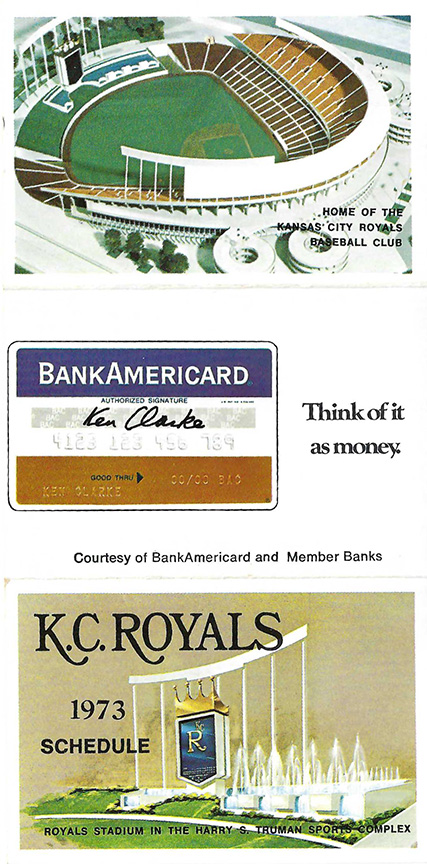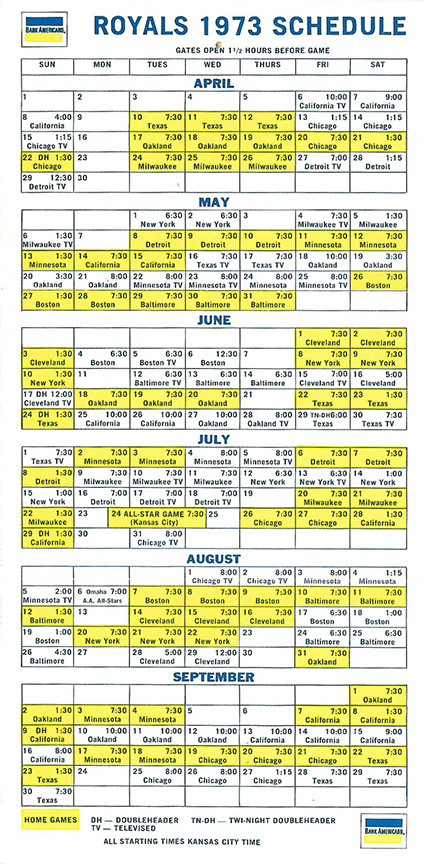

Dorri Partain
Contributor
Everything was up-to-date in Kansas City when Royals Stadium opened to fans on April 10, 1973, as part of the Harry S. Truman Sports Complex.
The process to build one new stadium for both football and baseball was expanded to two separate stadiums when architect Charles Deaton approached Jack Steadman, general manager for the Chiefs football team, with a novel idea – two stadiums side by side that would share parking and other amenities.
Deaton (1921-1996) is best known today for designing the Sculptured House, a modern concrete dwelling featured in the 1973 Woody Allen film, “Sleeper.” He partnered with local architectural firm Kivett & Myers (Clarence Kivett and Ralph Myers Sr.) to create a new concept in sports venues, with an emphasis on better access, wider concourses, improved sightlines, and other “people-oriented” features.
As shown in the architectural rendering on the cover of this 1973 schedule, those amenities included the 12-story animated scoreboard and the 322 ft. wide water spectacle to entertain fans during game time.
To obtain funding for the new stadiums and other county improvements, the Jackson County Modernization Committee pushed a bond issue that county voters approved in April 1967 to appropriate the $43 million projected for the sports complex alone.
Early plans for the complex included a rolling roof that could be moved into place during inclement weather. Deaton’s concept was to fill multiple 2,500-ft. channels with a thin layer of water that would buoy pressure pads under the roof sections, but the design was deemed too expensive to implement.
Deaton’s involvement with Kivett & Myers proved costly when they claimed credit for the complex’s design; an eight-year lawsuit was eventually settled out of court. Kivett & Myers went on to design the Kansas City International Airport and other iconic Kansas City structures, while the sports complex was the last of Deaton’s designs that was actually built.
The schedule was provided as an advertisement for BankAmericard, the first general purpose credit card offered by Bank of America. The card name changed to Visa in 1976.
















